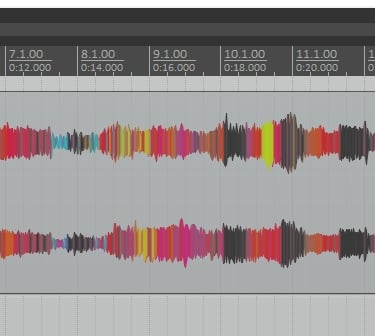Potentials of Spectography
The spectrograph function in Reaper allows the user to see pitch changes as color, layered above the usual waveforms. Originally, this function was designed as a practical tool.
Murat Ali Cengiz
12/23/20181 min read


The spectrograph function in Reaper allows the user to see pitch changes as color, layered above the usual waveforms. Originally, this function was designed as a practical tool: to help distinguish between percussion instruments without pitch and pitched instruments. It is remarkably effective, since at a glance one can immediately identify which track is a drum track and which belongs to a melodic instrument.
But looking at this, one cannot help but wonder: does the spectrograph itself carry the potential for graphic notation? If a spectrogram can represent sound in visual form, could the process be reversed, using a visual composition to generate new sound?
This opens up an intriguing possibility: treating the spectrogram not only as an analysis tool but as a canvas. Instead of reading a score written in traditional notation, one could draw or design directly on the spectrogram and then reverse-engineer it back into audio. What if carefully designed shapes, lines, or even architectural patterns were inserted into a spectrogram, and the result interpreted sonically? The act of composing could become a dialogue between drawing and listening, between image and time.
On the technical side, tools such as FFT (Fast Fourier Transform), sonograms, spectral editing, and image-to-sound conversion software already provide a foundation for such experiments. These approaches suggest that the boundaries between sound design and graphic notation are becoming increasingly porous.
In this sense, spectrography could become part of the Musicographics approach, standing alongside architectural mappings and other forms of pattern translation. It offers a new bridge from visual form to sound, bypassing traditional notation altogether.
Future experiments will follow, but the potential is clear: spectrography may not just be a window into sound, but also a doorway into new modes of composition.